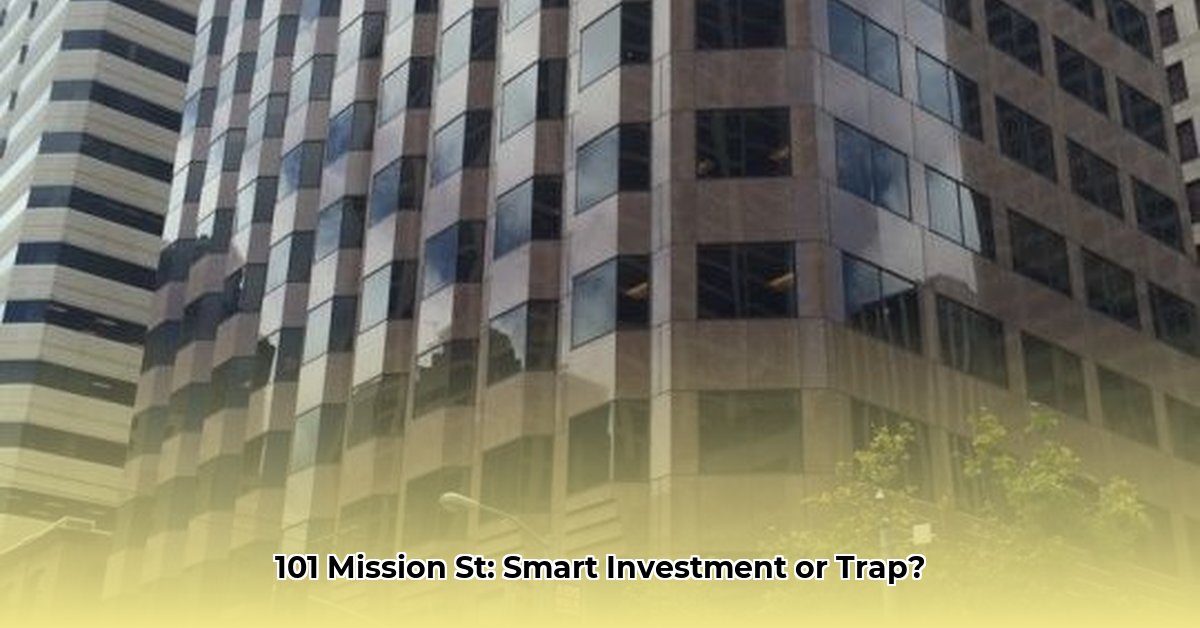
101 Mission Street: A Rincon Hill Investment Opportunity
101 Mission Street, located in San Francisco's vibrant Rincon Hill district, presents a compelling investment opportunity in the city's dynamic commercial real estate market. This report analyzes the factors influencing its potential profitability, considering both short-term and long-term prospects. While specific details about 101 Mission Street itself are limited, a comprehensive understanding of the broader San Francisco market provides invaluable context for evaluating this property.
Market Overview: Navigating San Francisco's Office Landscape
San Francisco's office market is characterized by a complex interplay of high demand and evolving market forces. The rise of remote work, economic fluctuations, and changing employee preferences all contribute to its dynamic nature. While the Rincon Hill district maintains strong appeal due to its convenient location and amenities, understanding these broader trends is crucial for assessing 101 Mission Street's investment potential. Is the current high demand sustainable, or are shifts in the market likely to impact occupancy rates? A thorough analysis of this question is paramount.
Key Factors Influencing Investment Value
Several key factors significantly influence the investment value and profitability of 101 Mission Street. They include:
- Location: Rincon Hill's desirability contributes to high rental demand, positively impacting potential returns.
- Energy Efficiency: The building's energy efficiency rating and alignment with San Francisco's sustainability goals are crucial for attracting tenants and increasing profitability. (High Energy Star ratings increase property value and rentability.) Further research is needed to determine the building's energy profile, including analysis of potential energy upgrades.
- Market Dynamics: Understanding the impact of remote work trends, economic cycles, and shifting tenant preferences is crucial for assessing long-term viability.
Comprehensive Due Diligence: A Necessary Step
Before investing, thorough due diligence is essential. This multi-faceted process should include:
- Property Inspection: A comprehensive inspection by a qualified professional to assess the building's physical condition, identifying potential maintenance needs.
- Financial Modeling: Creating a detailed financial model to project potential rental income, operating expenses, vacancy rates, and potential future capital expenditures. This should consider various scenarios and market conditions.
- Lease Agreement Analysis: A thorough review of all existing lease agreements to understand tenant obligations, lease terms, and potential risks.
- Energy Audit: A comprehensive energy audit to determine the building's energy performance, identify areas for improvement, and calculate potential cost savings from efficiency upgrades. An independent audit is necessary to provide an unbiased assessment and aid in identifying potential financial incentives related to energy efficiency upgrades.
Stakeholder Perspectives: Aligning Interests
The success of 101 Mission Street depends on the alignment of interests among key stakeholders:
| Stakeholder | Key Interests |
|---|---|
| Potential Tenants | Convenient location, amenities, lease flexibility |
| Investors | High rental income, property value appreciation |
| Property Managers | Efficient operations, tenant satisfaction |
| Government Agencies | Compliance with sustainability regulations |
Successfully navigating these diverse interests is important for long-term profitability.
Risk Management: Identifying and Mitigating Potential Challenges
Investing in commercial real estate involves inherent risks. For 101 Mission Street, potential challenges include:
- High Vacancy Rates: Mitigated through competitive pricing, proactive tenant acquisition, and building improvements.
- Rising Operating Costs: Mitigated through energy efficiency enhancements and efficient management practices.
- Shifting Market Dynamics: Mitigated by adaptable lease terms and flexible space configurations.
- Regulatory Changes: Mitigated by staying abreast of and complying with evolving regulations.
- Unexpected Property Damage: Mitigated through comprehensive insurance and preventative maintenance.
Proactive risk mitigation is crucial for maximizing the potential return on investment.
Conclusion: A Calculated Approach to Investment
101 Mission Street offers significant potential, situated in a desirable location, benefiting from positive market fundamentals. However, success hinges on a comprehensive understanding of the San Francisco commercial real estate market and diligent application of due diligence. By carefully considering the factors outlined above and implementing proactive risk management strategies, investors may successfully harness the opportunities presented by this prime San Francisco property. The current market climate necessitates a thoughtful, analytical approach to maximize potential profitability while mitigating inherent risks.